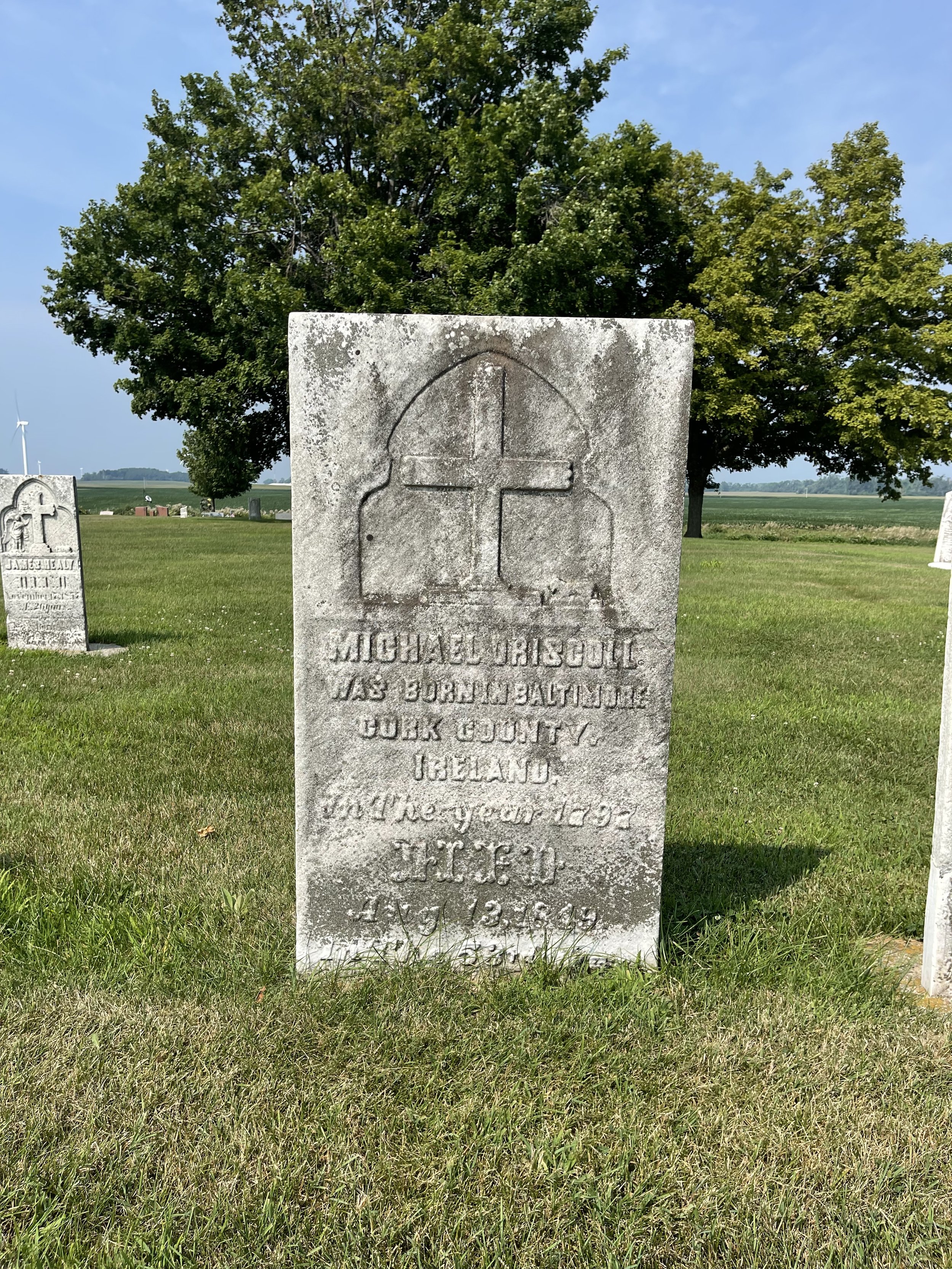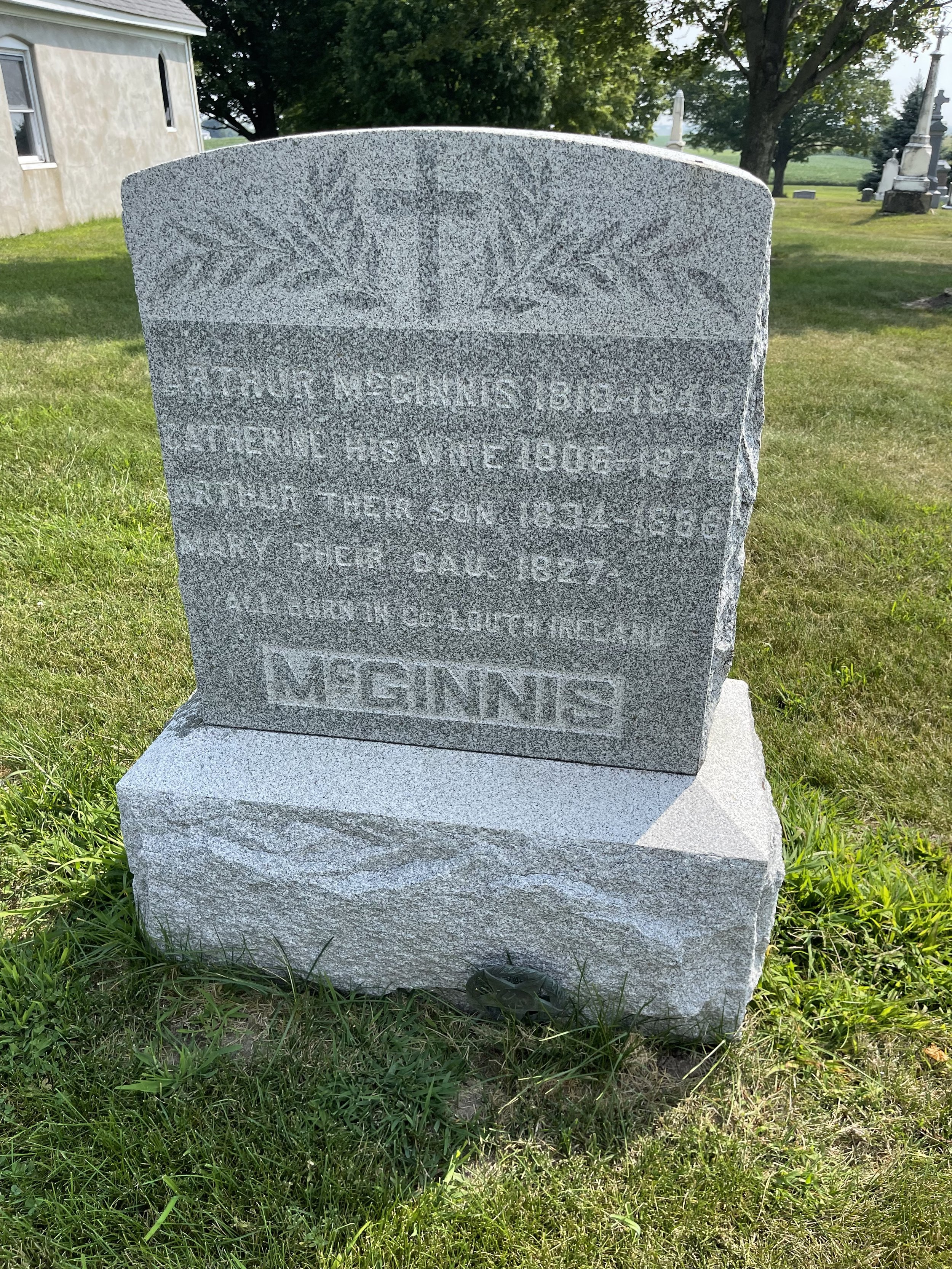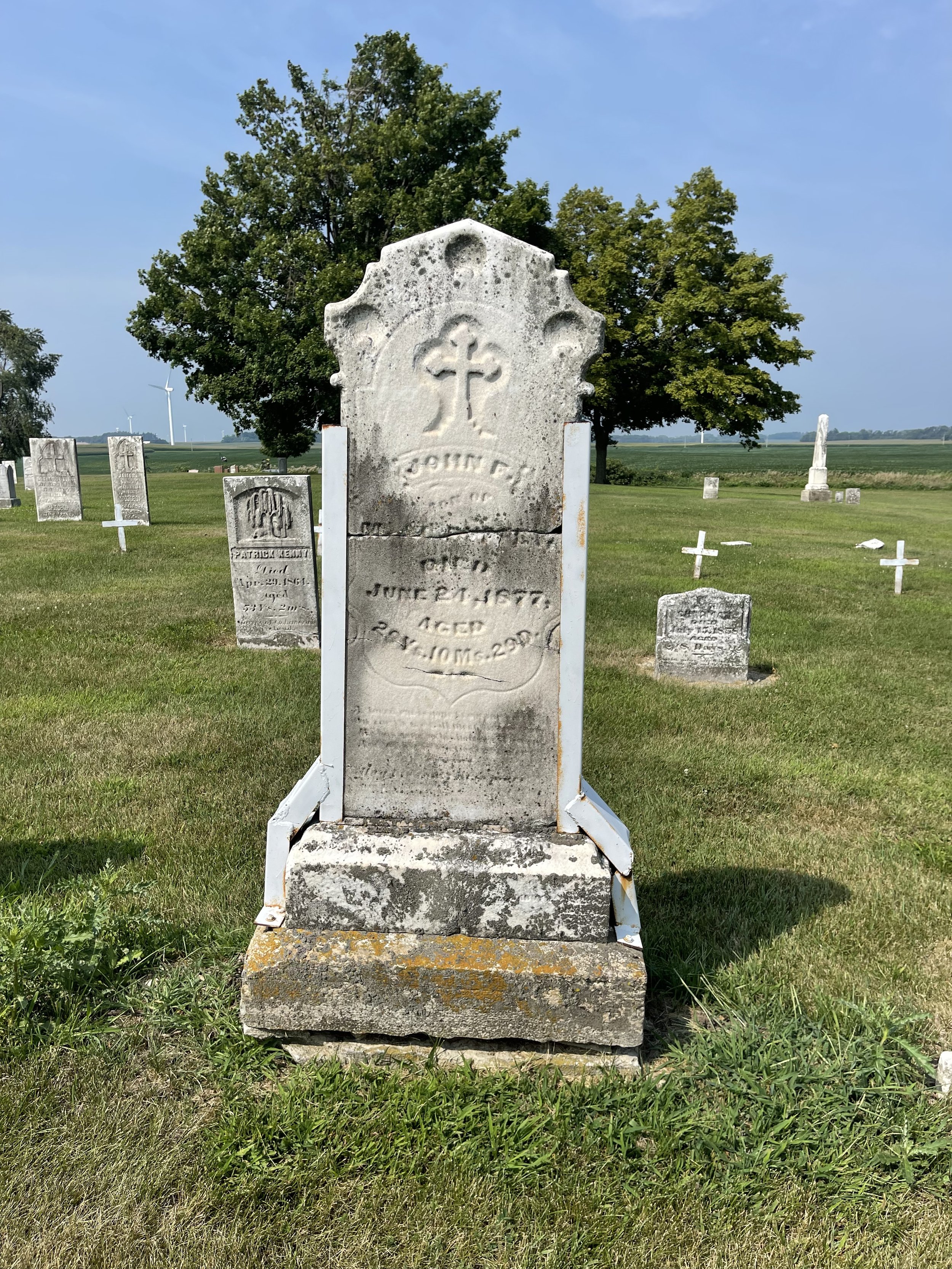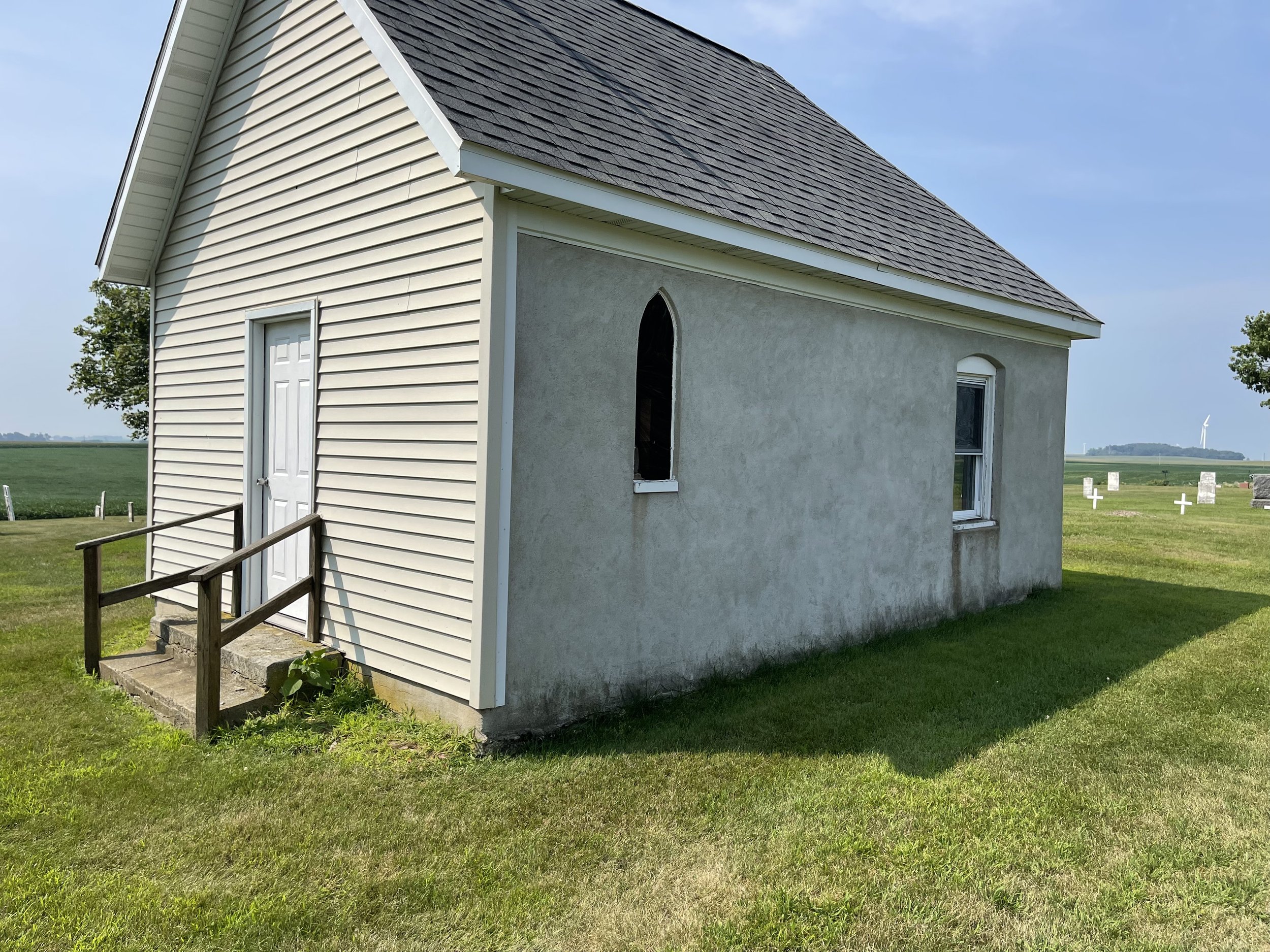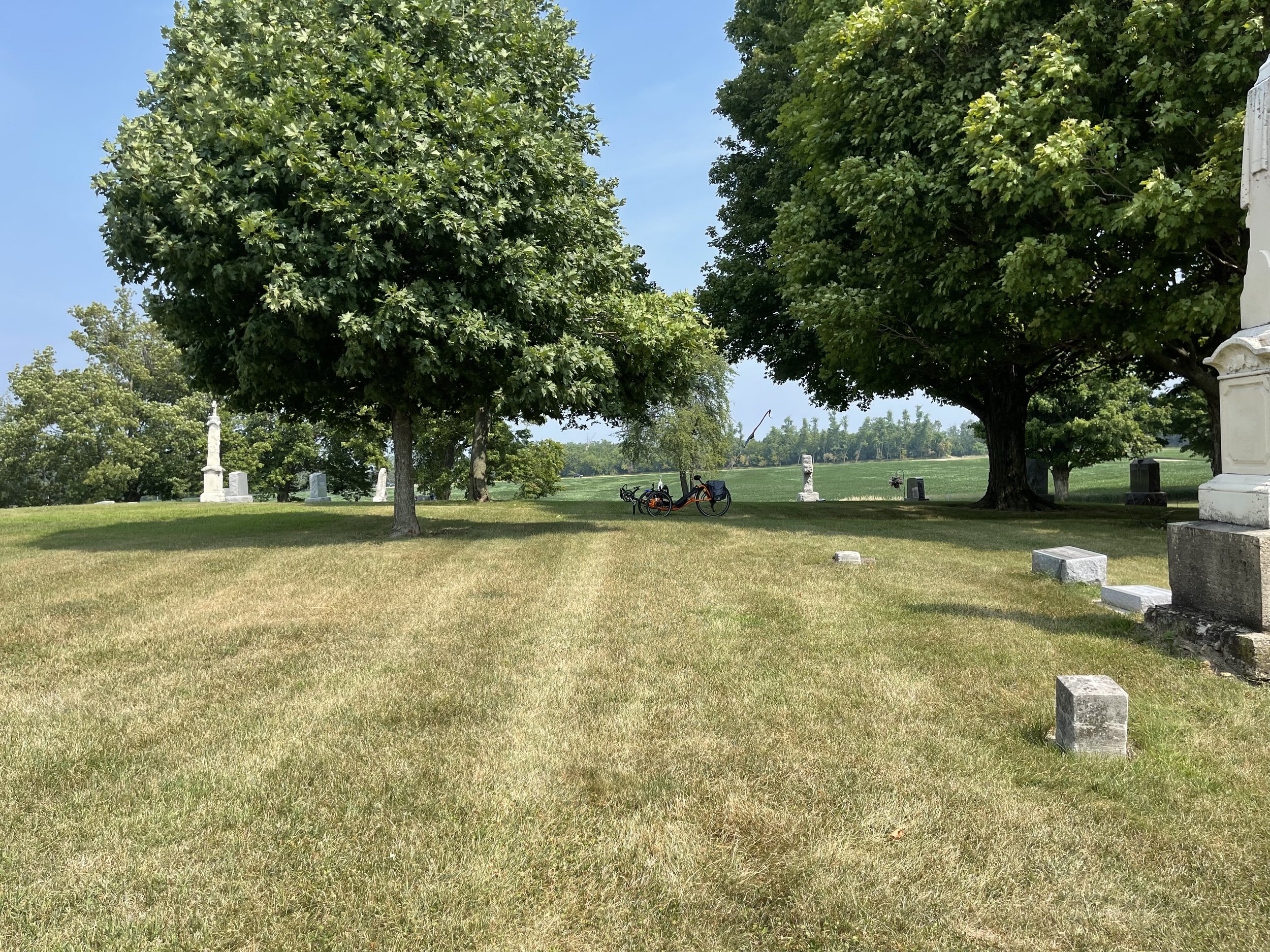St Michael’s Sandy Hill Cemetery
I spent a fair amount of my summer weekends riding through the northern Illinois countryside trying to build up my stamina for distance riding. Doing this meant that I had to lay out longer distance routes, which meant that I was seeing new and different parts of the region. This always has the bonus of reminding me that there is beauty all around us - you just have to look - and it also brought me across a cemetery that I had previously been unaware of.
St Micheal’s Cemetery isn’t hidden like some in the region are. But it is out of the way along a path that isn’t heavily traveled, and certainly wasn’t commonly traversed by me. However, it is off the main road, down a rustic drive, which also appears to be the back entry to someone’s farmstead. I have spent a fair amount of time in the past researching to find cemeteries in the area as part of my intermittent efforts towards doing genealogical research. I don’t recall this one turning up in my online searches. However, it’s possible that it did and I set it aside (and forgot it) because it didn’t include any relations.
And that would be the case in part because it appears to be a cemetery for Irish settlers. While my 3rd Great Grandmother, Martha Foulk (née Morrow) was of Irish descent, she’s just about the only one in the family. What’s more, Martha was born in Ohio. One of the things that makes this site especially interesting is that many of the people at rest here are from Ireland proper. How do I know this? It’s on the grave stones:
Yes - many of the stones have an indication of the county in Ireland in which the person was born. In the first, it also indicates a town (or perhaps a parish?) - Baltimore. Notable in the second is that the daughter doesn’t have a year of her passing on it. Perhaps she moved away and was interred elsewhere.
Not everyone here was born in Ireland, tho:
This site appears to be very well cared for and tended. There has been extensive effort to protect and contain several of the stones, with some cemented together:
And others with steel frames built around them to keep them in some semblance of whole:
I am certain it is no accident that bracing on the second one there takes on the shape of a cross. I’ve been to several of the old cemeteries in the area over the years, and I don’t think I’ve ever seen this level of effort towards maintaining the older stones before.
There is also another a feature here that I haven’t seen elsewhere:
In multiple locations through the site there are these steel crosses placed. I read them as markers to indicate a burial site where the stone is no longer present. This suggests an earnest effort to remember the person interred, even if their name is no longer available. So often at these older sites you see large swaths of area between the stones that just appear empty. In many cases, and with visits to multiple sites, you come to realize that this isn’t because our forefathers left that space empty, but is rather because the markers for the people there have since broken and/or fallen over and been swallowed by the earth. At times you can find markers that are partway through this process.
Here someone has made the effort to mark those spots and preserve some level of memory. It’s possible too that a record was kept of who was in those spots (one hopes).
There is a little chapel here that has the look of being a newer building on the outside.
That this is an illusion perpetrated by the vinyl siding becomes clear when you look inside:
This article about the site on Genealogy Trails indicates that the chapel was part of a larger church that once stood here. It seems the congregation moved westward towards the nearby town of Amboy.
I stopped here to take a short break during my ride, anticipating a 5-10 minute rest. I ended up staying and exploring for something like a half-hour. If this is your sort of thing, it’s an interesting and engaging spot, and very peaceful on a Sunday morning.

